More Than Words: Stories of Courage Read online
Dear Reader,
Within these pages you will find three uplifting stories of courage. The stories, written by some of Harlequin’s most beloved authors, are fiction, but the women who inspired them are real. They are women who have dedicated their lives to helping others and all are recipients of a Harlequin More Than Words award.
Through the Harlequin More Than Words program, established in 2004, Harlequin awards ordinary women for their extraordinary commitment to community and makes a $10,000 donation to the woman’s chosen charity. In addition, some of Harlequin’s most acclaimed authors donate their time and energy to writing novellas inspired by the lives and work of our award recipients. The collected stories are published, with proceeds returning to the Harlequin More Than Words program. Together with Susan Wiggs, Sharon Sala and Emilie Richards, I invite you to meet the Harlequin More Than Words award recipients highlighted in these pages. We hope their stories will encourage you to get involved in charitable activities in your community, or perhaps even with the charities you read about here. Together we can make a difference.
To learn more about the Harlequin More Than Words program or to nominate a woman you know for the Harlequin More Than Words award, please visit www.HarlequinMoreThanWords.com.
Sincerely,
Donna Hayes
Publisher and CEO
Harlequin Enterprises Ltd.
More Than Words
STORIES OF COURAGE
SUSAN WIGGS
SHARON SALA
EMILIE RICHARDS
CONTENTS
STORIES INSPIRED BY REAL-LIFE HEROINES
Homecoming Season
by Susan Wiggs
Inspired by Seana O’Neill
About the Author
Dedication
Acknowledgments
Chapter One
Chapter Two
Chapter Three
Chapter Four
Chapter Five
Chapter Six
Chapter Seven
Chapter Eight
Chapter Nine
Epilogue
Letter to Reader
The Yellow Ribbon
by Sharon Sala
Inspired by P.K. Beville
About the Author
Chapter One
Chapter Two
Chapter Three
Chapter Four
Chapter Five
Letter to Reader
Hanging by a Thread
by Emilie Richards
Inspired by June Nielsen
About the Author
Chapter One
Chapter Two
Chapter Three
Chapter Four
Chapter Five
Chapter Six
Chapter Seven
Letter to Reader
SEANA O’NEILL
COTTAGE DREAMS
Cancer. It fractures the lives of families, can bring financial hardship, interrupts work schedules and taxes families emotionally.
Seana O’Neill knows from personal experience these intimate details of loss and distress after watching her mother and two uncles battle cancer. So, as she sat on her Haliburton, Ontario, cottage deck in 2002 an idea came to Seana that would not only change her life, but give hope and healing to hundreds of people living with the disease.
“It’s not fair to just have this place sitting empty when it could be filled with people,” she remembers saying of her cottage at the time.
It was Labor Day weekend and Seana was at a crossroads in her own life, not sure if she wanted to go back to her film career in Toronto. In the end, lifelong cottager Seana decided she would like to share her cottage with those who would not otherwise have the opportunity to get away. She was inspired to invite cancer survivors to her cottage when she wasn’t there—and thought other cottagers might do the same.
She was right. The response to the idea was immediate and sparked the creation of Cottage Dreams. The registered charity connects cancer survivors and their families with donated cottages to help bring families back together, to recover, reconnect and rebuild their lives—all in a soothing natural setting.
In only one short year, Cottage Dreams went from idea to reality and placed its first six families. Today the cottage-lending program has grown to include hundreds of cottages across Ontario and has made hundreds of placements.
“When you start something you really believe in, you do it because something is burning inside you,” she says today. “I thought. ‘I can’t ignore this.’”
Nothing else like it
Though the health care system provides patients with the support they need while in treatment, it stops when they finally walk out the doctor’s door. Cancer survivors have to find a way to rebuild their lives. But it’s not an easy task. A cancer diagnosis often brings financial hardship for patients and their families. Not able to work for lengthy periods, patients often find that a time away to heal and reflect is unaffordable.
This is when Seana and Cottage Dreams take over. The organization provides, at no cost, an opportunity to move on to emotional, spiritual and physical recovery. Whisked away to a natural setting, families are removed from the doctor appointments, hospital visits and other harsh and exhausting realities of their illness.
In other words, to speed healing there’s nothing like listening to the gentle lap of the lake as your kids watch for falling stars.
Making a difference
Of course, Cottage Dreams is all about making wishes come true. And to hear the families tell it, Seana and her team do that and much more.
“Cottage Dreams has been a sense of new beginning for my family and me. After treatment was the perfect time to spend some quality time together and reconnect as a family,” says one happy cottage visitor.
But the visitors are far from the only people to benefit from the program. Cottage owners who donate their properties also report positive benefits.
“To sum up my experience with Cottage Dreams—it made me feel good,” says a donor.
Cottage Dreams makes Seana feel pretty good these days, too, although starting the project meant long hours, and trying to convince a few naysayers.
At the beginning, many of the people she spoke to asked Seana how Cottage Dreams would handle insurance, whether tax receipts would be issued and how Seana would choose the lucky families to stay at the cottages. But Seana wasn’t worried. She soon talked to an insurance company, a cottage-rental agency and a lawyer. The rental agency and insurance company got on board almost right away and found innovative ways to ensure Cottage Dreams would be successful. Her lawyer, however, wasn’t convinced.
“The lawyer said, ‘It’s going to cost you ten grand and I can’t guarantee you anything. It probably won’t fly,’” she says, pausing for a moment before continuing. “So I got another lawyer.”
Her new lawyer sat on Seana’s board as chairman for three years.
Changing and growing
Seana’s passion and commitment galvanize people. From the grassroots support of local families in cottage communities to major corporations, government and cancer research organizations, she’s brought people closer. She says she’s still amazed she was able to pull it together, but at the same time she had faith in her abilities to get the job done.
“I knew from the beginning that coordinating would be my strength. Also being a Virgo helps,” she quips. “My mother would attest to that.”
But running Cottage Dreams has meant changing and growing the organization so it reaches and helps as many people as possible. In the beginning, Cottage Dreams accepted only those in the recovery stage—within nine months of the treatment’s completion.
After talk
ing to other people who could use a week’s respite, however, Cottage Dreams has extended its focus to include people in the middle of treatment and, in one case, a father of three young children who had an inoperable brain tumor. The doctors said if the man were placed within three months, he would still be well enough to enjoy himself.
“So we rush. Those people go to the top of the pile,” Seana says.
Ask Seana what she’s most amazed by, however, and she says she’s been inspired by the inherent goodness in the people Cottage Dreams touches. One woman, a single mother undergoing chemotherapy, once told Seana to go ahead and give her space to someone else. “I’m sure there are more deserving people out there than me,” the woman e-mailed Seana.
These are the lives Cottage Dreams strives to reach—not just in Ontario, but across Canada. Plans to expand nationwide by 2010 are under way.
“We’re getting more families through the program, so we’re getting more feedback. It really shows us we’re making a difference,” Seana says.
And Cottage Dreams is offering hope and respite, one cottage at a time.
For more information visit www.cottagedreams.org or write to Cottage Dreams, 33A Pine Avenue, P.O. Box 1300, Haliburton, Ontario K0M 1S0.
SUSAN WIGGS
HOMECOMING SEASON
SUSAN WIGGS
Susan Wiggs’s life is all about family, friends…and fiction. She lives at the water’s edge on an island in Puget Sound, and she really does commute to her writers’ group with her friend Sheila in a seventeen-foot motorboat.
According to Publishers Weekly, Wiggs writes a “refreshingly honest romance,” and the Salem States-man Journal says that she is “one of our best observers of stories of the heart [and who] knows how to capture emotion on virtually every page of every book.” Booklist characterizes her books as “real and true and unforgettable.”
She is the proud recipient of three RITA® Awards and four starred reviews from Publishers Weekly for her books. Her novels have been translated into more than a dozen languages and have made national bestseller lists, including the USA TODAY and New York Times lists. She’s been featured in the national media and is a popular teacher at writers’ workshops and conferences worldwide.
The author is a former teacher, a Harvard graduate, an avid hiker, a boater out of necessity, an amateur photographer, a good skier and terrible golfer, yet her favorite form of exercise is curling up with a good book. Readers can write to her at P.O. Box 4469, Rollingbay, WA 98061 or visit her on the Web at www.susanwiggs.com.
To my beautiful friend, Shannon, a survivor
ACKNOWLEDGMENTS
The author wishes to acknowledge the following individuals for their input and inspiration—the amazing Seana O’Neill and all the Cottage Dreams host families and guests, especially Phil Barley, Patty Varvouletos and Marie Stothart. Thanks to Marsha Zinberg of Harlequin for thinking of me.
CHAPTER ONE
Miranda Sweeney’s white paper gown rustled as she shifted her weight on the exam table and pulled the edges together to cover herself. “Just like that, it’s over?”
Dr. Turabian closed the metal-covered chart with a decisive snap. “Well,” he said, “if you want to call twenty-five rounds of radiation, nine months of chemo and two surgeries ‘just like that.’” He took off his glasses and slid them into the pocket of his lab coat. “I couldn’t be happier with your tests. Everything’s where we’d hoped and planned for it to be, right on schedule. Other than taking your immunotoxin every day, there’s nothing more you have to do.”
Miranda blinked, overwhelmed by the news. “I’m…I don’t know what to say.” Was there a rule of etiquette in this situation? Thank you, Doctor? I love you?
“You don’t have to say anything. I think you’ll find getting better is a lot easier than being sick.” He grinned. “Go. Grow your hair. Come back in three months and tell me you feel like a million bucks.”
He left her alone, the heavy door of the exam room closing with a sigh. Miranda went through the motions of getting dressed, all the while mulling over her conversation with the doctor.
You’re done.
I’m done.
Stick a fork in her, she’s done.
After a year of this, Miranda didn’t believe you could ever really be done with cancer. It could be done with you, though, as you lay on the medical examiner’s table like a waxy victim in a crime show.
Snap out of it, she told herself. For once, the doctor’s advice didn’t make her skin crawl—no precautions about nausea meds and gels and post-op limitations. Nothing like that. His advice was so simple it was scary. Get dressed and get on with your life.
She tore off the crinkly paper smock and wadded it up, crunching it into a small, tight ball between the palms of her hands and then making a rim shot to the wastebasket. Take that.
As she reached up to pull her bra off a hook, a familiar, unpleasant twinge shot up her right arm. The post-op sensations never seemed to end, although her doctor and surgeon assured her the tingling and numbness would eventually go away.
Which was—as of a few minutes ago—over.
She told herself she ought to be laughing aloud, singing “I Will Survive” at the top of her lungs, dancing down the corridors of the clinic and kissing everyone she passed. Unfortunately, that was the last thing she felt like doing. Maybe the news hadn’t quite sunk in, because at the moment, she simply felt hollow and exhausted, like a shipwreck victim who’d had to swim ashore. She was alive, but the fight for survival had taken everything from her. It had changed her from the inside out, and this new woman, this gritty survivor, didn’t quite know what to make of herself.
She turned to face the mirror, studying a body that didn’t feel like her own anymore. A year ago, she’d been a reasonably attractive thirty-eight-year-old, comfortable in her size-10 body and—all right, she might as well admit it—downright vain about her long, auburn hair. During the months of treatment, however, she had learned to avoid mirrors. Despite the earnest reassurances of her friends, family, treatment team and support group, she never did learn to love what she saw there.
Some would say she’d lost her right breast and all her hair, but Miranda considered the term lost to be a misnomer. She knew exactly where her hair had gone—all over the bed pillows, down the drain of the shower, in the teeth of her comb, all over the car and the sofa. Shedding hair had followed in her wake wherever she went. Her husband, Jacob, had actually woken up one day with strands of her wavy auburn hair in his mouth. Over the course of a few days, her scalp had started to tingle. Then it stung and all her hair had come out and it wasn’t lost at all. It had simply become detached from her. She collected it in a Nordstrom’s bag and put it in the trash.
As for the other thing she’d “lost”—her breast—well, she knew darn well where that had gone, too. During the surgery, the tissue had been ever so carefully bagged and tagged and sent to the hospital pathology lab for analysis. Her diagnosis was made by someone she’d never met, someone she would never know. Someone who had typed her fate onto a neat form: infiltrating ductal carcinoma, stage one, tumor size 1.5 cm, nodes 15 negative.
She was considered lucky because she was a candidate for TRAM flap breast reconstruction, which took place immediately following her mastectomy. A separate surgical team came in and created a new breast, using tissue from her stomach. She’d struggled to be matter-of-fact about her reconstructed breast, figuring that if she didn’t make a big deal of it, then it wouldn’t be a big deal. Even though her counselor and support group encouraged her to acknowledge that an important, defining part of her was gone, that her body was permanently altered, she had resisted. She claimed she hadn’t been that enamored of her breasts in the first place. They simply…were there. Size 34B. And after surgery, they still were, only the right one had been created with tissues from her stomach, something she didn’t exactly mind losing. And the tattooed-on nipple was something of a novelty. How many women could boast about that?
Miranda knew she should be weeping with relief and gratitude just about now, but she still didn’t like looking at herself in the mirror. The reconstructed breast seemed slightly off-kilter, and although the skin tone and temperature were exactly the same as her other breast, she couldn’t feel a thing there. Nothing, nada. And her belly button was pulled a bit to one side.
According to the members of her support group, she was supposed to look in the mirror and see a survivor. A phenomenal woman whose beauty shone from within. A woman who was glad to be alive.
Miranda leaned forward, looked carefully. Where was that woman?
Still in hiding, she thought. Her gorgeous self didn’t want to come out to play.
After an agony of baldness, she was getting her hair back. Her brows and eyelashes. Unfortunately, the fledgling fuzz of hair on her head was just plain weird. She had a terrible feeling that it was coming in whitish gray. But it was her real actual hair, growing in strangely soft and baby fine, as though she had just hatched from an egg. Her skin was sallow, and new lines fanned outward from the corners of her eyes. The whites of her eyes were yellow. She still hid beneath hats, scarves and wigs. She didn’t like looking like a cancer patient even though that was exactly what she was. Correction, she told herself. Cancer survivor, no longer a patient.
She turned away, grabbed her bra and finished dressing, pulling on her khaki twill pants and a front-button shirt. She disliked the twinges she felt whenever she pulled a shirt over her head. It was as though her body kept wanting to remind her that she’d been nipped, tucked and rearranged, and there wasn’t a darn thing she could do about it. She slung her butter-yellow sweater around her shoulders and loosely tied it by the sleeves, knowing the morning chill would be gone by now. With a deliberate tug, she put on her hat. Today’s accessory was a sun hat made of cotton duck, which she’d chosen for comfort rather than style.

![[What Might Have Been 02] Alternate Heroes Read online](http://i1.bookreadfree.com/27/what_might_have_been_02_alternate_heroes_preview.jpg) [What Might Have Been 02] Alternate Heroes
[What Might Have Been 02] Alternate Heroes![[What Might Have Been 01] Alternate Empires Read online](http://i1.bookreadfree.com/01/what_might_have_been_01_alternate_empires_preview.jpg) [What Might Have Been 01] Alternate Empires
[What Might Have Been 01] Alternate Empires SEDUCTIVE: A Contemporary Romance Anthology
SEDUCTIVE: A Contemporary Romance Anthology A Year of Love
A Year of Love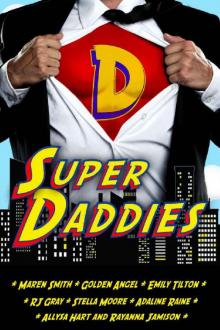 Super Daddies: A Naughty Nerdy Romantic Comedy Anthology
Super Daddies: A Naughty Nerdy Romantic Comedy Anthology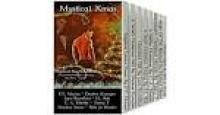 Mystical Xmas: Paranormal Romance Anthology Box Set
Mystical Xmas: Paranormal Romance Anthology Box Set![[What Might Have Been 04] Alternate Americas Read online](http://i1.bookreadfree.com/06/what_might_have_been_04_alternate_americas_preview.jpg) [What Might Have Been 04] Alternate Americas
[What Might Have Been 04] Alternate Americas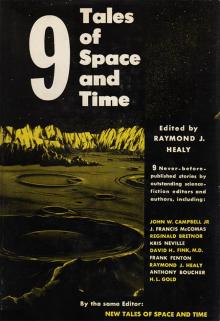 9 Tales of Space and Time
9 Tales of Space and Time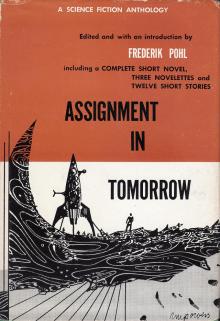 Assignment in Tomorrow
Assignment in Tomorrow![[What Might Have Been 03] Alternate Wars Read online](http://i1.bookreadfree.com/i/03/16/what_might_have_been_03_alternate_wars_preview.jpg) [What Might Have Been 03] Alternate Wars
[What Might Have Been 03] Alternate Wars The Complete Dangerous Visions
The Complete Dangerous Visions The IF Reader of Science Fiction
The IF Reader of Science Fiction Holiday in the Heart
Holiday in the Heart Torquere Press Sips and Shots
Torquere Press Sips and Shots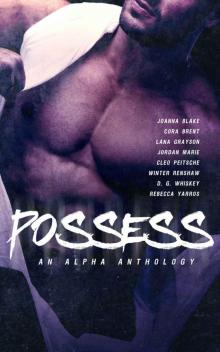 Possess: An Alpha Anthology
Possess: An Alpha Anthology Beyond Control
Beyond Control Bad Boys Under the Mistletoe: A Begging for Bad Boys Collection
Bad Boys Under the Mistletoe: A Begging for Bad Boys Collection Hugo Awards: The Short Stories (Volume 3)
Hugo Awards: The Short Stories (Volume 3) The Second IF Reader of Science Fiction
The Second IF Reader of Science Fiction Astounding Science Fiction Stories Vol 1
Astounding Science Fiction Stories Vol 1 What Happens Over Spring Break: A Short Story Anthology
What Happens Over Spring Break: A Short Story Anthology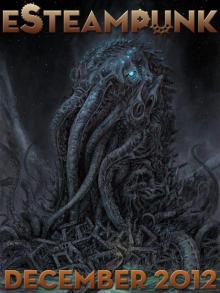 eSteampunk Vol. 01 No. 02
eSteampunk Vol. 01 No. 02 SHADOWRUN: Spells and Chrome (shadowrun)
SHADOWRUN: Spells and Chrome (shadowrun) Dark Tales
Dark Tales Getting Schooled (Craving #9)
Getting Schooled (Craving #9) The Hellfire Book of Beltane Volume One
The Hellfire Book of Beltane Volume One The Alpha's
The Alpha's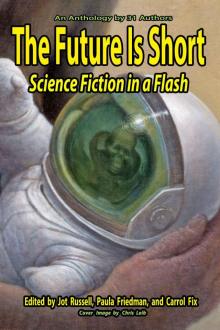 The Future Is Short
The Future Is Short From the Heart: A Valentine's Day Anthology
From the Heart: A Valentine's Day Anthology Reckless: A Bad Boyz Anthology
Reckless: A Bad Boyz Anthology LOL #3 Romantic Comedy Anthology
LOL #3 Romantic Comedy Anthology A Christmas Seduction: A Regency Anthology
A Christmas Seduction: A Regency Anthology All a Cowboy Wants for Christmas
All a Cowboy Wants for Christmas Hugo Awards: The Short Stories (Volume 2)
Hugo Awards: The Short Stories (Volume 2) The Golden Age of Science Fiction Novels Vol 01
The Golden Age of Science Fiction Novels Vol 01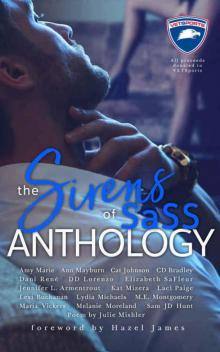 The Sirens of SaSS Anthology
The Sirens of SaSS Anthology Mistletoe & Kisses
Mistletoe & Kisses Explorers of Space
Explorers of Space Time Travel Omnibus Volume 2
Time Travel Omnibus Volume 2 Dead Science: A Zombie Anthology
Dead Science: A Zombie Anthology Beer Goggles Anthology
Beer Goggles Anthology Apexology: Horror
Apexology: Horror Heat Wave: A Summer Loving Anthology
Heat Wave: A Summer Loving Anthology Fall in Love
Fall in Love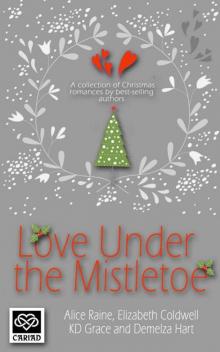 Love Under the Mistletoe
Love Under the Mistletoe Hook & Ladder 69: Eighteen Authors...One Sexy Firehouse.
Hook & Ladder 69: Eighteen Authors...One Sexy Firehouse. LOL #2 Romantic Comedy Anthology - Volume 2 - Even More All-New Romance Stories by Bestselling Authors (LOL Romantic Comedy Anthology #2)
LOL #2 Romantic Comedy Anthology - Volume 2 - Even More All-New Romance Stories by Bestselling Authors (LOL Romantic Comedy Anthology #2)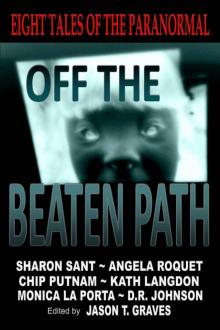 Off the Beaten Path: Eight Tales of the Paranormal
Off the Beaten Path: Eight Tales of the Paranormal![Best New Zombie [3] - Best New Zombie Tales, Vol. 3 Read online](http://i1.bookreadfree.com/i/03/25/best_new_zombie_3_-_best_new_zombie_tales_vol_3_preview.jpg) Best New Zombie [3] - Best New Zombie Tales, Vol. 3
Best New Zombie [3] - Best New Zombie Tales, Vol. 3 The Golden Age of Science Fiction Novels Vol 05
The Golden Age of Science Fiction Novels Vol 05 Alphas of Sin
Alphas of Sin Halloween Spirits: 11 Tales for the Darkest Night
Halloween Spirits: 11 Tales for the Darkest Night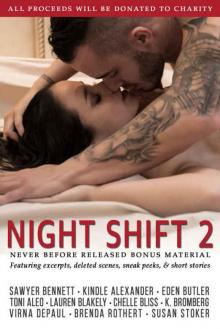 Night Shift 2
Night Shift 2 Ellora's Cavemen: Jewels of the Nile II
Ellora's Cavemen: Jewels of the Nile II Hot for the Holidays (21 Holiday Short Stories): A Collection of Naughty and Nice Holiday Romances
Hot for the Holidays (21 Holiday Short Stories): A Collection of Naughty and Nice Holiday Romances Of Heaven and Hell
Of Heaven and Hell 12 Christmas Romances To Melt Your Heart
12 Christmas Romances To Melt Your Heart '90s Playlist (Romance Rewind #1)
'90s Playlist (Romance Rewind #1) Bleed Blue 69: Twenty-Five Authors…One Sexy Police Station
Bleed Blue 69: Twenty-Five Authors…One Sexy Police Station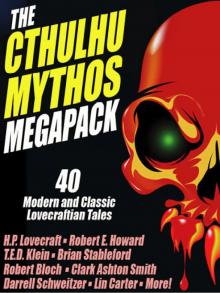 The Cthulhu Mythos Megapack (40 Modern and Classic Lovecraftian Tales)
The Cthulhu Mythos Megapack (40 Modern and Classic Lovecraftian Tales)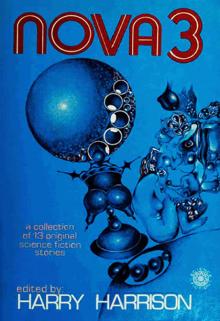 Nova 3
Nova 3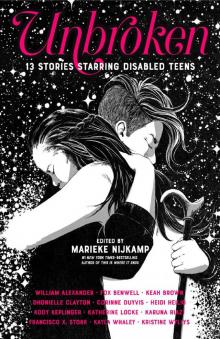 Unbroken: 13 Stories Starring Disabled Teens
Unbroken: 13 Stories Starring Disabled Teens Dead Men (and Women) Walking
Dead Men (and Women) Walking Sweet Seduction
Sweet Seduction Brothel: The Magnolia Diaries
Brothel: The Magnolia Diaries Rogues (A Boys Behaving Badly Anthology #1)
Rogues (A Boys Behaving Badly Anthology #1) Best New Zombie Tales, Vol. 3
Best New Zombie Tales, Vol. 3![The Hellfire Bo [1] - The Hellfire Book of Beltane Volume One Read online](http://i1.bookreadfree.com/i1/04/06/the_hellfire_bo_1_-_the_hellfire_book_of_beltane_volume_one_preview.jpg) The Hellfire Bo [1] - The Hellfire Book of Beltane Volume One
The Hellfire Bo [1] - The Hellfire Book of Beltane Volume One Horror in Paradise
Horror in Paradise Time Travel Omnibus Volume 1
Time Travel Omnibus Volume 1 More Than Words: Stories of Courage
More Than Words: Stories of Courage River Walk: Ten Kinky Collaborations
River Walk: Ten Kinky Collaborations F*cking Awkward
F*cking Awkward Hearts of England
Hearts of England The Golden Age of Science Fiction Novels Vol 03
The Golden Age of Science Fiction Novels Vol 03 Drunk in Love
Drunk in Love Up and Coming: Stories by the 2016 Campbell-Eligible Authors
Up and Coming: Stories by the 2016 Campbell-Eligible Authors Descended from Darkness: Apex Magazine Vol I
Descended from Darkness: Apex Magazine Vol I Dominant Persuasions Anthology: 12 Tales of D/s, Where Mastery Meets Passion
Dominant Persuasions Anthology: 12 Tales of D/s, Where Mastery Meets Passion The Golden Age of Science Fiction Novels Vol 04
The Golden Age of Science Fiction Novels Vol 04 Passion in Portland 2016 Anthology
Passion in Portland 2016 Anthology Men of Mayhem
Men of Mayhem The Dirty Anthology
The Dirty Anthology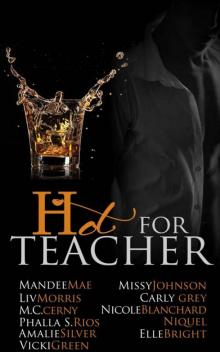 Hot For Teacher
Hot For Teacher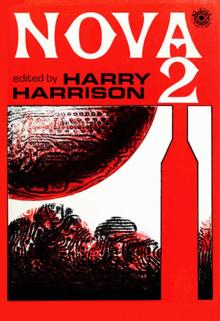 Nova 2
Nova 2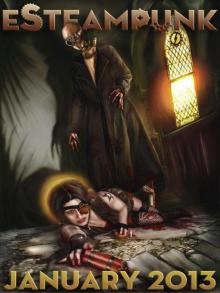 eSteampunk Vol. 01 No. 03
eSteampunk Vol. 01 No. 03 Afternoon Tea Mysteries Vol Three
Afternoon Tea Mysteries Vol Three Romance in the Rain
Romance in the Rain Tales From the Crossroad Volume 1
Tales From the Crossroad Volume 1 A Very Alpha Christmas
A Very Alpha Christmas Nova 1
Nova 1 Once: A Collection of Sinfully Sexy and Twisted Tales
Once: A Collection of Sinfully Sexy and Twisted Tales Nuts About You: A Testicular Cancer Anthology
Nuts About You: A Testicular Cancer Anthology From the Street (shadowrun stories)
From the Street (shadowrun stories) Box of 1Night Stands: 21 Sizzling Nights
Box of 1Night Stands: 21 Sizzling Nights Descended from Darkness: Vol II
Descended from Darkness: Vol II Pink Shades of Words: Walk 2016
Pink Shades of Words: Walk 2016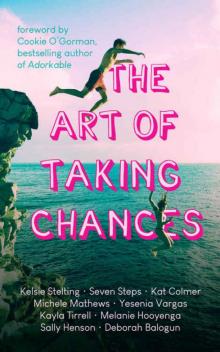 The Art of Taking Chances
The Art of Taking Chances The Butterfly Box_A SASS Anthology
The Butterfly Box_A SASS Anthology Harlan County Horrors
Harlan County Horrors![Afternoon Tea Mysteries [Vol Three] Read online](http://i1.bookreadfree.com/i2/04/12/afternoon_tea_mysteries_vol_three_preview.jpg) Afternoon Tea Mysteries [Vol Three]
Afternoon Tea Mysteries [Vol Three] The Golden Age of Science Fiction Novels Vol 02
The Golden Age of Science Fiction Novels Vol 02 Ellora's Cavemen: Jewels of the Nile III
Ellora's Cavemen: Jewels of the Nile III